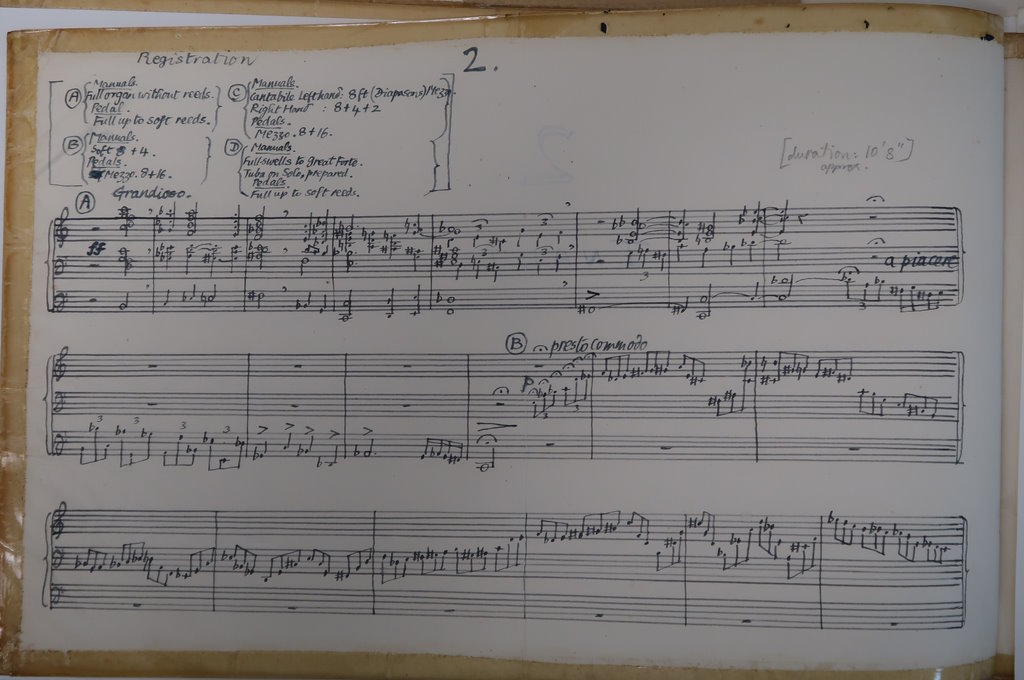Nativitates
- Posted in:
- 1940s
- free score
- organ
Composed at the age of 20, while Tranchell was in hospital suffering from iritis, Nativitates is a dissonant and challenging work for organ, in two movements: 1. Gregale (2'25" approx.), 2. Inalt (10'8" approx.).
In his analysis of Peter Tranchell's early music, Peter Marchbank wrote of this work:
Composed in the Spring of 1943, whilst having treatment on his eyes in Banstead, Nativitates was, according to the title-page, intended as an Organ Sonata. The later CV describes it as a Symphony for organ. Only two movements were completed, however. Again, the music is headed by the instruction that “all accidentals apply to that note only, before which they go”. Peter was clearly pleased with the piece since he sent it to Dr Douglas Fox, his old music-master at Clifton, as soon as it was completed. During that Summer, he was also being asked for a copy by Jane Scott (the novelist, Elizabeth Jane Howard) so that she could show it to Geraint Jones, then a well-known young organist. Peter’s keen interest in the organ at this time is shown by the clear and detailed registration he gives before each movement. The first, Gregale, is quite short, is headed Sempre soporifico and is in 6/4. The registration is precise: All manuals - delicate and frigid tones. The music starts quietly with a trill on the C two octaves above middle C. The left hand enters un poco cantabile and the music gradually builds to a forte and an allargando from which it subsides. The pianissimo music returns in the opening tempo. After a pedal trill comes the marking penseroso and the music gets even quieter toward the final chord of C sharp minor. The second movement, Inalt, has detailed registration for four different tonal colours and is marked Grandioso. The music opens with a loud chordal passage before an a piacere pedal solo leads into a section marked Presto commodo. There are echoes of Hindemith and the writing is virtuosic with lots of rapid triplet passage-work. Another long pedal solo brings back the music of the opening. At the climax, the tuba enters in the left hand with accompanying demi-semiquaver arpeggios in the right hand. Although there is an immaturity in the calligraphy and the musical grammar, this work shows more assurance in the handling of dissonance and a greater mastery of large-scale form.
Nativitates, two movements for organ - free typeset score
Please also see our guidance on the use of this score.
